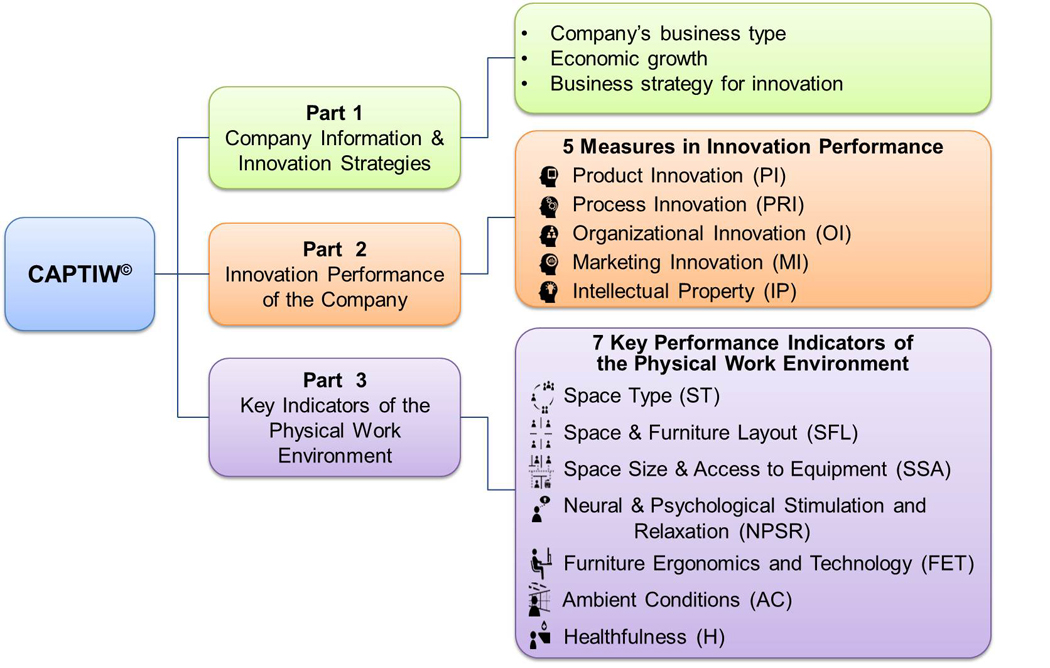How to use CAPTIW©
Overview of the Process:
After creating an account with a valid email, a coordinator creates a project to initiates an analysis for the project. With the new project created, the coordinator starts the process by following the steps below. Upon completion in Step 7, a report is readily available.

Information Gathering During Steps 2 and 3 Above
The assessment is divided into three Parts. Each section of the Parts contains questions/ measures to evaluate the section topic. The figure below summarizes the contents of the instrument. Specific types of information are needed in each section

- General information
- Possible personnel/ departments to contact may include executives, human resources, accounting, IT, finance, or facility planning and management
- All the information must be of the specific facilities or spaces of a company/branch of the company being examined
- Estimates are acceptable within the best of the ability when it is necessary. However, precise information is preferable for the accurate results and meaningful interpretations of the data
- The total duration of completing the instrument may take 30 minutes to an hour if all information is readily available. However, this may vary if all information is not readily available or an immediate coordination with personnel in other departments is not possible.
- In Part 2
- Calibrate the portion of a company/branch of the company's contribution from the total amount of measures being examined if the work was completed in collaboration with other branches or other companies. (If a branch of a company is filling out the instrument and has the same shared goals and objectives with the main headquarters of the company, it can fill out the same innovation strategies as the headquarters in Part 1)
- Only fill out the innovation types relevant to the company. For instance:
- Manufacturing, wholesale and trade (including cars and bikes) companies fill out Product Innovation, Marketing Innovation, and Intellectual Property Innovation
- Retail, trade (not including cars and bikes), hotels and other hospitality business, financial service, real estate, transport, storage and communication companies fill out Product Innovation, Process Innovation, Organizational Innovation, and Marketing Innovation
- In Part 3
- Floor plans and/or furniture plans would be necessary to determine the amount of various types of spaces
- If some spaces have overlapping functions and purposes, then, count those spaces again for various relevant questions*. For instance, hallway impromptu meeting spaces may also be set up for chatting and greeting. Then, these spaces can count as meeting spaces as well as socialization spaces. If a private office space is set up with reconfigurability to do collaborative work, this space can count as focus space as well as collaboration space.
Confidentiality:
All the information typed in the instrument is confidential and the results associated with the company's name will not be released or published without permission of the company. If you have any concerns regarding the confidentiality of the information, please contact info@innovativeworkplaceinstitute.org.
- Definition from the US Department of Commerce & the National Economic Council
- Work of acquiring, analyzing, and manipulating information to develop suitable solutions to a matter. Knowledge workers are skilled individuals who produce original and useful ideas and solutions for tangible or intangible products, services, or processes.

